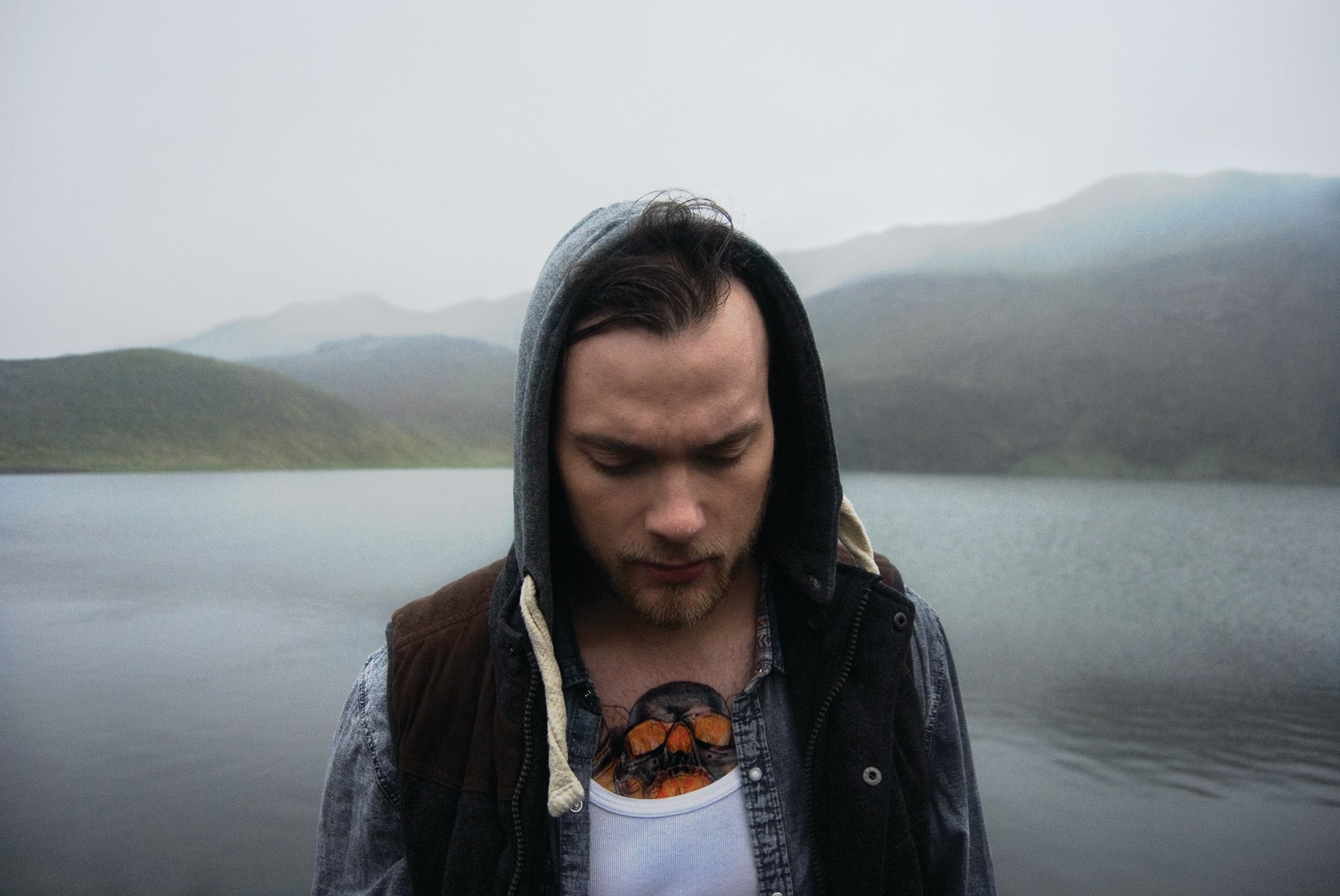Photo above from Wikimedia, Creative Commons, by Zach Klein. No edits made.
- See the sights of Reykjavik with this Hop On - Hop Off City Sightseeing Tour
- Soak up the brews of Iceland with a Reykjavík City Beer Tour
- Taste the city with the Reykjavik Food Walk
- See the best of Iceland with this 8 Day Summer Self Drive Tour
- Unique luxury in the North - enjoy the Beer Spa from Akureyri
- See also: Music of Iceland
As comfortable exploring the world of free electronic jazz as she is the plains of virtual reality, her resourceful dedication to creativity itself has made her “the high priestess of art pop”, an anti-authoritarian innovator; talented, rebellious and unlike anyone else before her.
Why You Can Trust Our Content
Guide to Iceland is the most trusted travel platform in Iceland, helping millions of visitors each year. All our content is written and reviewed by local experts who are deeply familiar with Iceland. You can count on us for accurate, up-to-date, and trustworthy travel advice.
Hers is the art that disobeys and challenges convention, playing not only with the listener's presumptions but also the artist's, developing and manifesting itself into the sounds and visions we know and love today.
I talk, of course, of Björk, an artist whose fierce attitude, inspiring madness and incomparable drive have made her name synonymous with Iceland. Reykjavik-born and bred, Björk’s cosmic wailings have brought staggering international attention to the country since the 1980s, ever building its reputation as home to some of the most imaginative artists found on the planet.
In fact, her contribution has been so great that a grateful ex-prime minister, Davíð Oddsson, proposed in 2000 that Björk should be given rights over an island called Ellidaey. The plan did not come to fruition, and, just to clear up a common myth, the lodge seen on the dramatic islet in the Westman Islands was never Björk’s home; the proposal concerned a different Ellidaey in Breidafjordur.
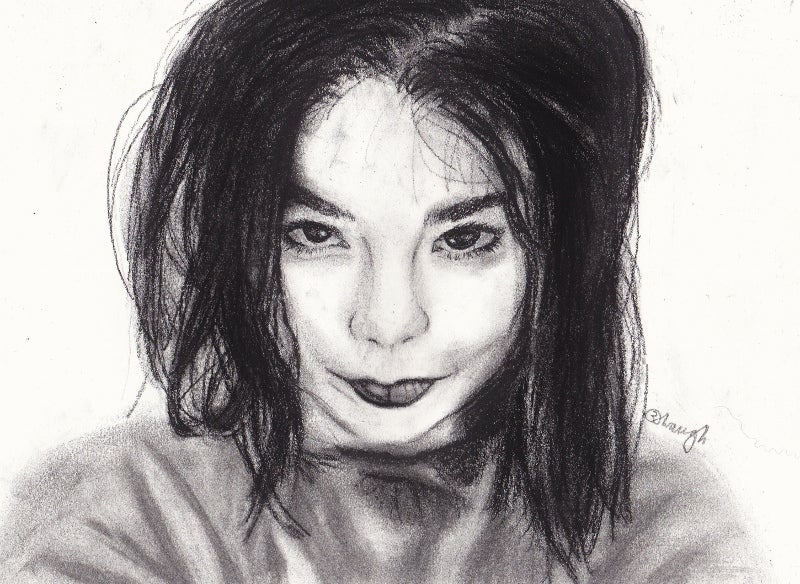 Photo from Wikimedia, Creative Commons, by Failuresque. No edits made.
Photo from Wikimedia, Creative Commons, by Failuresque. No edits made.
Still, her incredible success has done nothing to diminish her down-to-earth appreciation of her hometown, nor her family or the integrity of the work itself. Of living in Iceland, Björk wrote in her forum, “ we don’t have much hierarchy and no-one is more important than the next one, therefore autographs are kinda silly. Here, it is a matter of self-respect.”
This respect is something the singer shares for her homeland, having on numerous occasions publicly challenged the perils of heavy industry and shown great solace toward the protection of the Icelandic Highlands. “When I was a teenager I used to hitchhike and camp, and spend a few days on my own each year. The first money I got, when I was 13, I used to buy a tent. It was my ideal freedom. And I don’t think I’m alone in that ideal. There’s a sacredness that comes with this landscape."
- See also: Iceland's Troubled Environment
Still, Iceland was not enough to contain the singer’s talents or achievements. But how did this young and creative Icelander go on to capture the hearts and minds of millions of music fans abroad?
Björk's Early Life and Career
Born 21st November 1965, Björk Guðmundsdóttir was raised by her mother, environmental activist, Hildur Rúna Hauksdóttir, after Hildur and her husband, Guðmundur, divorced shortly after the birth.
Hildur moved with her daughter to a counter-culture oriented commune, where she quickly fell in love and remarried a guitar player, Sævar Árnason, renowned as the ‘Jimi Hendrix of Iceland.’ Artists and musicians commonly gathered in the family home to play music, swap stories and drink; it was from this early bohemian atmosphere where Björk would draw much of her later influence.
Musically gifted as a child, from the age of six to fourteen Björk attended Reykjavik music college, Barnamúsíkskóli, studying the classics and learning to play the piano and flute. It was here that Björk had her first taste of a professional career as a musician.
At eleven years old, Björk was one of many school children enrolled to sing or read a poem for the visiting parents. Björk chose to sing Tina Charles’ 1976 hit single, ‘I Love to Love (But My Baby Loves to Dance)’. Her rendition went down so well, her teachers chose to send a recording to Iceland’s one radio station, RÚV, who in turn elected it for national broadcast.
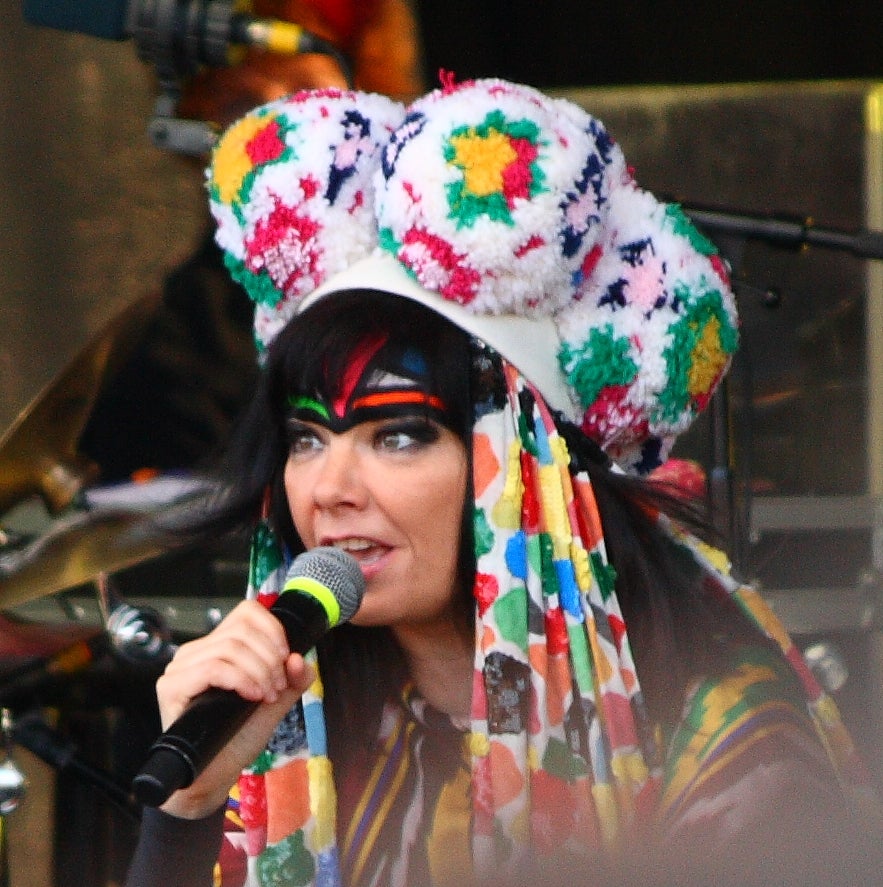 Photo from Wikimedia, Creative Commons, by Bruce McAdam. No edits made.
Photo from Wikimedia, Creative Commons, by Bruce McAdam. No edits made.
As fate would have it, the recording was heard by representatives of Fálkinn (once a label, now a bicycle shop) who were quick to offer the young singer a record deal. Her 1977 debut album, Björk, was recorded at Hljóðriti Studios, consisting largely of cover songs translated into Icelandic; examples include ‘Your Kiss is Sweet’ by Stevie Wonder and ‘The Fool on the Hill’ by Lennon–McCartney.
The track ‘The Arab Boy’ was written by her stepfather, whilst the album cover was designed by Hildur, making the overall compilation a familial and collaborative effort. The album was given a limited release (at least 7000 copies) on both vinyl and cassette. Björk was just twelve years old.
Upon the album’s entry into the Icelandic charts, Björk became something of a reluctant child celebrity; friends at school were eager for her attention but failed to recognise the Björk they idolised was quite different from the girl herself. Dejected, Björk spent her social hours with musicians three times her age, many of whom encouraged from her a second album. It wasn’t until 1979, with the arrival of the punk scene to Iceland, that Björk would once again dip her toes into the world of music.
At fifteen years old, Björk had become enamoured with the British hardcore punk outfit, Discharge. Eyebrows shaved, she formed the all-girl Riot band, Spit and Snot, though the group quickly disbanded due to “attitude problems” and a tendency to sing only about their dislike of men.
A year later, she moved into her new band, a pop/new wave group called Exodus, whose legacy survives only on a single, garage-recorded cassette. Exodus was highlighted with a TV spot, putting Björk in the limelight once again. After Exodus, she performed one gig with the band JAM80, though her tenure was short-lived.
Tappi Tíkarrass
Tappi Tíkarrass is generally considered to be Björk’s first serious venture as a professional musician. The group’s name translates to Cork the Bitch’s Ass (a reference to an early critique of the band’s music that it “fitted like a cork in a bitch’s ass”), and included bassist Jakob Smári Magnússon. Though a punk outfit, the band brought together elements of rock, jazz and funk music, defying categorisation and setting an unspoken precedent for Björk’s future career as an artist.
The band was active for two years and released one punk E.P, ‘Bitið fast í vitið’ (1982), and later, a disco-tinged album, ‘Miranda’ (1983). The group’s lightweight, melodic tracks were reminiscent of the early days of The Cure and thrust the band members into new realms of success. Yet, despite this newfound attention, Björk’s vocals were still not yet fully explored or developed, lacking the throaty hollerings so common in her later work, both in The Sugarcubes and as a solo artist.
- See also: Top 9 Most Famous Icelanders in History
Tappi Tíkarrass appeared in the Icelandic comedy film, ‘Nýtt líf’ (‘New Life’ 1983), directed by Þráinn Bertelson, as well as featuring heavily in ‘Rokk í Reykjavík’, a TV documentary directed by iconic Icelandic film director, Friðrik Þór Friðriksson. Björk contributed two songs to the film’s soundtrack and organically became the film’s major centrepiece, a resonating icon of that precious punk scene that rocked Iceland so heavily throughout the eighties.
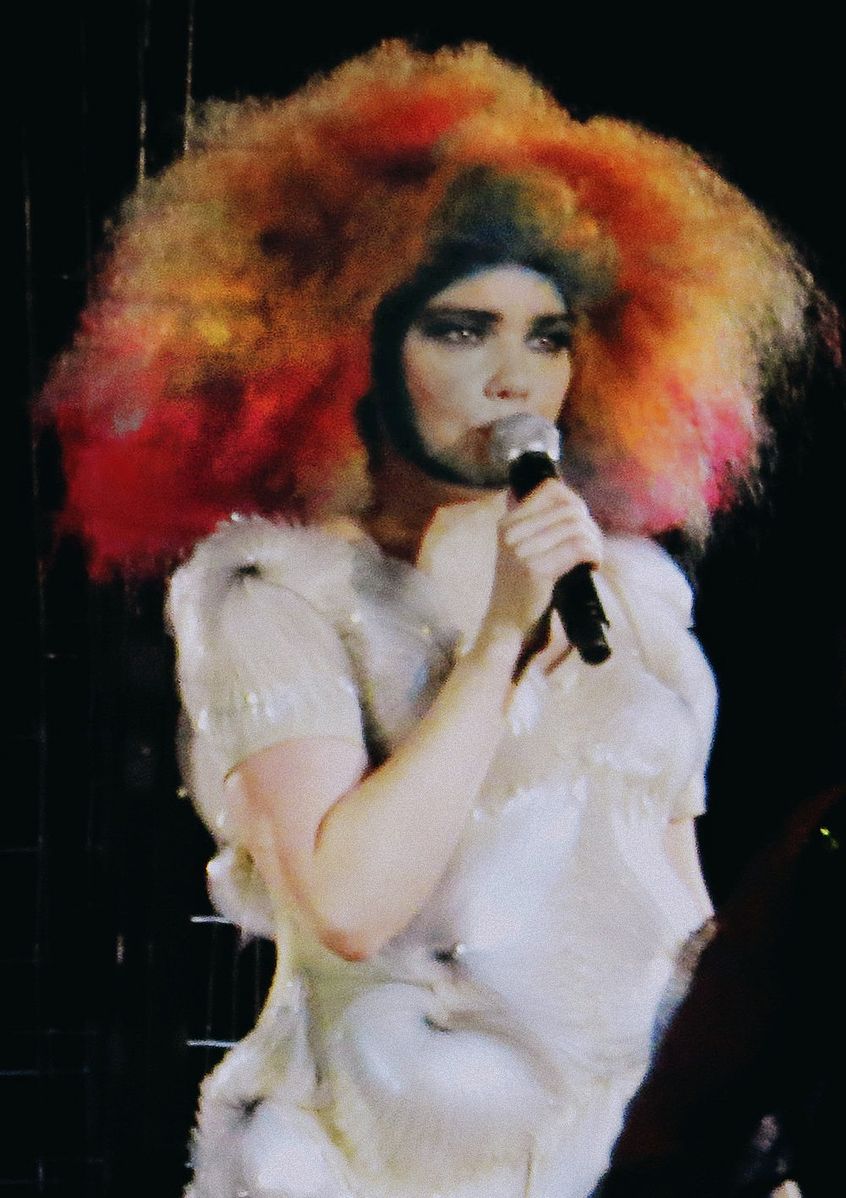 Photo from Wikimedia, Creative Commons, by Rlef89. No edits made.
Photo from Wikimedia, Creative Commons, by Rlef89. No edits made.
- See also: The Story of Icelandic Cinema
K.U.K.L
In 1983, Ásmundur Jónsson of Gramm Records formulated the idea of an Icelandic supergroup, enlisting Björk as one of the leading vocalists. It was Ásmundur’s intention that the band play live for the final episode of the radio show, Áfangar; the experience was such a success, however, that the band mates enthusiastically agreed to make the group a permanent outfit, K.U.K.L (‘Witchcraft’ in Medieval Icelandic).
A year later, their first album ‘The Eye’ (1984) was released, thanks in large part to the band’s connections with anarcho-punk groups in London. It was produced and distributed by Crass Records and was named after one of Björk’s early favourite books, ‘Story of the Eye’ by Georges Bataille (1928).
- See also: Witchcraft and Sorcery in Iceland
The album reached number six on the UK Independent charts and received high praise from the critics; David Tibet of Sounds Magazine wrote of it “The Eye steps boldly out of the supposed confines that the Crass label is meant to impose...and drags the listener into a glacial world of confused emotion and shattered visions.”
1984 and 1985 saw K.U.K.L tour Europe, playing L'Eldorado in Paris, Pandora’s Box Festival in the Netherlands and Roskilde Festival in Denmark. Throughout this period, the band collaborated with various artists including the rock singer Megas (though these recordings are still, as of yet, unreleased.)
K.U.K.L also made television appearances; one notable example was Björk performing, seven months pregnant, in little more than her underwear. In 1986, the band released their second album with Crass Records, ‘Holidays in Europe (The Noughty Nought)’, a more complex record with a greater focus on electronic instruments, distortion effects and experimental noise.
Later that summer, the band’s trumpeter and vocalist, Einar Ørn, returned to Iceland from the UK to set up an entirely new record label, Bad Taste. With members of the band now pursuing other projects, K.U.K.L split up, though four of the original members would continue their collaboration with their new avantpop group; The Sugarcubes.
The Sugarcubes
Widely regarded as the greatest rock band to have ever come out of Iceland, The Sugarcubes were met with surprising, widespread critical acclaim upon the release of their first album ‘Life’s Too Good’ (1988). They had formed in 1986, on the very day Björk and her then-husband, Thor Eldon (the band’s guitarist) welcomed their son into the world.
From the outset, the group was something new and edgy, their name even alluding to the ingestion of LSD. Signed onto the UK label, One Little Indian (now One Little Independent Records), and the US label, Elektra, their debut post-punk satire on the optimism of eighties pop propelled Björk and the band to stardom, the signature single ‘Birthday’ presenting them with the perfect opportunity to tour internationally.
In 1988, the band appeared on Saturday Night Live, as well as performing at The Ritz in New York City; they could even boast David Bowie and Iggy Pop as fans of their musical outpourings. No musicians in Icelandic history had ever matched such a level of achievement.
The band’s second album, ‘Here Today, Tomorrow Next Week!’ (1989) was less successful, however, with critics panning the group’s lack of development and deliberate attempt to stump their audience. Following a second international tour, the band considered splitting but instead chose to go on hiatus.

The Sugarcubes’ third and final album, ‘Stick Around For Joy’ (1992), was met with higher praise and birthed the band’s major hit single, the ironically titled ‘Hit.’ During the leg of their Zoo TV Tour, the band opened for U2, thus performing in front of over 700,000 people, by far their largest audience to date. Still, no level of accomplishment could save the band from splitting up, and in 1992, they did just that.
The Sugarcubes reunited briefly in 2006 to play a concert in Reykjavik, raising money for the Bad Taste label and to help continue promoting Icelandic music. The band has made it clear, however, that there are no future plans for recording or performing new tracks.
Björk's Solo Career
In the space intermittent between the break up of The Sugarcubes and Björk’s second solo outing, the story has over time become cloaked in myth and inaccuracy. To quantify the debts raised by The Sugarcubes throughout the eighties, some claim Björk went to work in an antique shop, others that she ran a market stall.
Regardless of the truth, Björk’s commitment to a future in music was undiminished. Little did she know then, her time to break out as a solo artist was fast approaching; the world of music would never be the same again.
Debut (1993), Post (1994) and Telegram (1996)
Whilst in the dying day of The Sugarcubes, Björk sent a demo cassette of her own songs to Bad Taste. Of that period, Björk has stated, “I realised that it was now or never. Either I record all those songs which had been floating in my head for years, otherwise, I'd never do it.”
Once the band was on hiatus, Björk moved to London where she was quickly introduced to a music scene, perhaps, better suited to her tastes than that projected by The Sugarcubes; Brian Eno, Kate Bush, Acid House... an almost endless list.
Her first album, ‘Debut’ (1993) was produced by Nellee Hooper, famed for his work with Soul II Soul and Massive Attack. Though initially reluctant to work with the producer (the initial concept was to use multiple producers), Björk was quickly inspired by his ideas and the pair spent many studio sessions writing and recording numbers for the album.
Reaction upon the album’s release was generally positive; breaking the status quo of the electronic/dance music so popular in the early nineties, Björk won ‘Best Newcomer’ and ‘Best International Female’ at the 1994 Brit Awards.
Björk’s second album saw a noticeable development in her songwriting and composition; unlike 'Debut', where the songs had been written in Iceland, 'Post' was intended to convey the fast-paced and eclectic energy of the singer’s new home in London. Unlike the album’s predecessor, numerous producers collaborated on the album, including Graham Massey of 808 State and Massive Attack’s Tricky.
Despite being regarded as an experimental album with a wide range of emotional overtones, listeners still found 'Post' to be accessible and endearing, praising the tracks for their adventurous and club-friendly nature.
Following 'Post', Björk released her first full-length remix album, 'Telegram', even though the singer herself fails to classify it that way; “For me, Telegram is really Post as well but all the elements of the songs are just exaggerated. It's like the core of Post. That's why it's funny to call it a remix album, it's like the opposite. Telegram is more stark, naked. Not trying to make it pretty or peaceable for the ear. Just a record I would buy myself.”
'Telegram' divided critics who felt as though Björk was revisiting familiar ground, though its bolder reworkings have since found a loyal audience.
Homogenic (1997) and Stalking Incident
In 1996, tragedy struck in the form of Ricardo Lopez, a mentally-ill pest control officer living in Florida. Trapped by feelings of inferiority and self-loathing, Ricardo had since eighteen kept himself a recluse, nurturing and feeding into his dangerous obsessions with women in the public eye. Having previously stalked a young American actress, Lopez quickly fixated himself on the Icelandic artist after seeing her by chance in a music video.
After reading of Björk's relationship with UK producer, Goldie, Lopez felt deeply betrayed and angered, the relationship inflaming his already dangerous views on race. It was then that he decided to kill her; in his Florida home, Lopez began to document the construction of a letter bomb, hidden inside of a hollowed out book.
Lopez sent the package ostensibly through the singer’s record label, then committed suicide. Upon the police’s discovery of his body and the subsequent, confessional material alongside him, the FBI immediately set about disposing of the bomb. The package had already made its way to England but was sitting in a South London post office. Safely, the Metropolitan police intercepted the package before anyone could be hurt.
- See also: Of Monsters and Men | A Melodic Odyssey
Understandably, Björk was highly distressed by the incident, by how close she and her son had come to danger; by how intricately strangers could entangle themselves in her personal life. Quickly, the singer hired security for her son, as well as a minder to take him to and from school. To avoid the ensuing media attention, Björk left for Spain to concentrate on writing and recording her third solo album.
The Homogenic album was to sound like “rough volcanoes with moss growing over them.” Throughout the span of her career, Homogenic is widely regarded as Björk’s finest moment as an artist, laying down the lengthy melodies, sonics and eerily personal lyrics that have since made the singer so iconic. Having departed from working with her producer Nellee Hooper, Homogenic was a collaborative effort by numerous producers.
Homogenic was released in September 1997 and was nominated for Best Alternative Music Performance at the 1998 Grammy Awards. Björk also won the Best International Female at the 1998 Brit Awards, to which she thanked the audience by saying famously “I am grateful grapefruit.”
Dancer in the Dark & Selmasongs (2000)
In 2000, Björk played her first lead role of Selma in Lars Von Trier’s musical ‘Dancer in the Dark’. The director had spent nearly a year trying to persuade Björk to take the part; the singer was concerned that she was “a music artist, not a cinema artist.” Little did he know how contentious the pair’s relationship would ultimately become.
The shoot has become infamous regarding Björk’s erratic behaviour on set. Lars Von Trier has testified that each morning before shooting, Björk would approach him and say “Mr Von Trier, I despise you,” before spitting at him.
On the other side of the dispute, Björk would claim Von Trier to be sexist and impossible to work with. Regardless, she would also leave the set mysteriously for three days, causing numerous production delays and was suspected of having eaten parts of her costume. As Björk stated herself, the experience was emotionally taxing.
Von Trier was also planning on casting himself as an angry character whose only purpose in the film is to chastise Selma. However, due to the pair’s reactive chemistry, the director decided to cast another actor in fear that he would overact, thus putting the production into jeopardy.
Despite vowing never to act again, Björk won the Best Actress award at Cannes Film Festival that year. The film was enormously polarising, with some hailing the highbrow, artistic direction whilst others condemned it as pretentious and shallow.
To coincide with the film’s release, Björk released the album 'Selmasongs'. The album was met with favourable reviews, though like the film, it had a polarising effect on critics; reviews ranged from “Selmasongs is mostly show tunes on Ecstasy, and you keep praying for a police raid" to “Selmasongs paints a portrait of a woman losing her sight, but it maintains Björk's unique vision.”
The song ‘I’ve Seen it All’ was nominated for an Academy Award for Best Original Song; at the awards ceremony, Björk wore the now iconic ‘swan dress’ and proceeded to drop from it onto the red carpet a large Ostrich egg.
The late and lovely comedienne, Joan Rivers, remarked of the incident, "Later I saw her in the ladies room spreading papers on the floor…This girl should be put into an asylum” The swan dress would later make a reappearance on the cover of Björk’s fourth solo album, Vespertine.
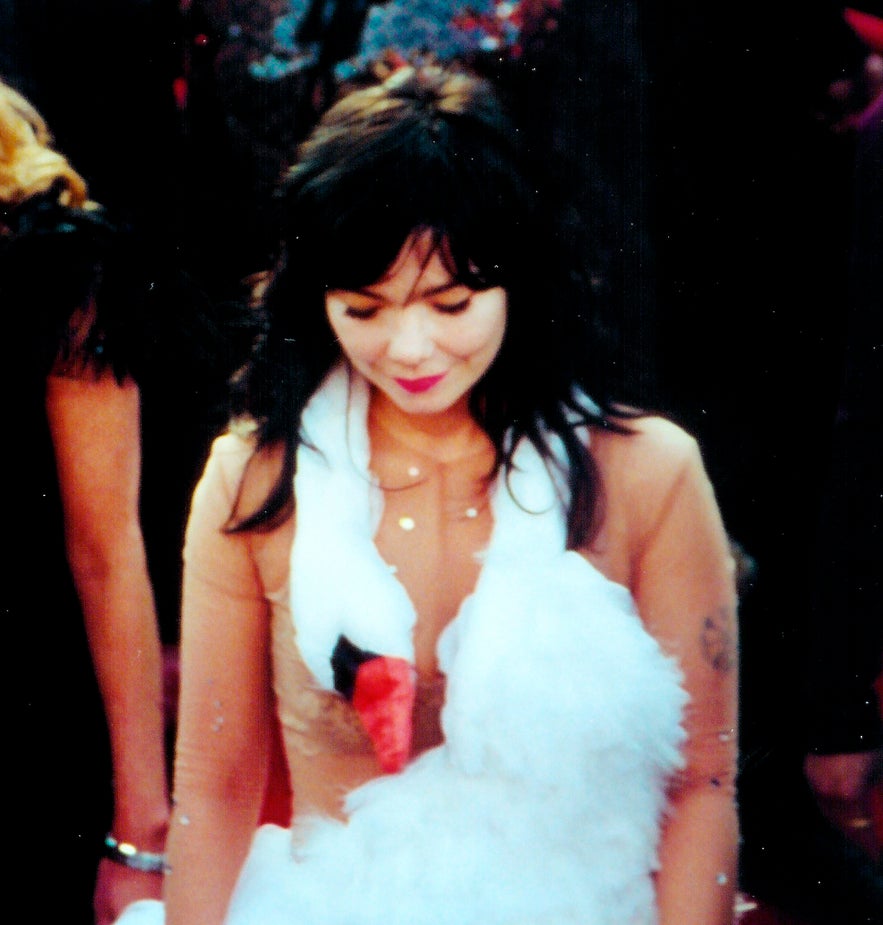
Vespertine (2001)
Vespertine was shaped largely by two defining and paradoxical factors in Björk’s life; her strenuous stint working under Lars Von Trier and her new relationship with sculptor, photographer and filmmaker, Matthew Barney. Both experiences pushed her artistically to write songs that were intimate, emotional and revealing, a further step away from Björk's era as the queen of dancehall music.
Work on the album began during the production of 'Dancer in the Dark', with Björk claiming that whilst 'Selmasongs' felt like work, 'Vespertine' was a hobby. The tranquil and hushed tones of 'Vespertine' were an expression of escape from the extroverted character she was made to play on set. Sitting for hours alone at her computer, 'Vespertine' would become known as Björk's "laptop album", an electronica record that touched upon the domesticity of everyday life.
The album was an enormous critical success, sensationalising new and old listeners alike with the singer’s sensual, erotic lyrics and multi-layered, rhythmic instrumentation. The album reached number 8 on the UK Albums chart and number 19 on the US Billboard 200, as well as reaching Gold Certification in the UK, France and Canada.
Fourteen years later, Björk would tell Pitchfork magazine of her irritation at others failing to recognise the individual auteurship she had over her albums, writing "I did 80% of the beats on Vespertine and it took me three years to work on that album, because it was all microbeats — it was like doing a huge embroidery piece. Matmos came in the last two weeks and added percussion on top of the songs, but they didn't do any of the main parts, and they are credited everywhere as having done the whole album."
Throughout her career, Björk has been vocal regarding the gender double standards in the music industry, though it is only of late that she has reclaimed the feminist label; in 2015, the singer famously retorted, "Everything that a guy says once, you have to say five times." Hoping to inspire and advise young women, Björk cited her time as lead vocalist in The Sugarcubes as a perfect example of how new female musicians often struggle to be recognised over their male counterparts.
- See also: Gender Equality in Iceland
Medúlla (2004) & Drawing Restraint (2005)
'Medúlla' is distinctive amongst Björk's body of work in so much that the album is largely a cappella, constructed using various vocals and effects. At the time of release, Björk claimed this to be her most outright political album, an attempt to counter the resurgence of nationalism that manifested after the September 11th attacks in New York City.
The album would be nominated for two Grammy Awards and reached number 1 on numerous charts around the world. There was, however, no promotional tour to coincide with the album’s release because Björk believed the songs would be too difficult to perform live. Instead, the singer was commissioned by the Olympic Committee to perform for the 2004 games in Athens. Björk performed the song ‘Oceania,’ her dress unfurling throughout the song’s duration until it filled the entire stage, revealing a map of a unified world.
Björk returned to the world of acting to star in her then-husband's art-house feature, ‘Drawing Restraint 9.’ The film, an abstract examination of Japanese culture, featured no dialogue but instead stylistically conveyed the narrative through sculpture, music and conceptual imagery.
Björk also produced the film’s soundtrack, marking the second time she worked directly under the influence of cinema. She also appeared in another film that year, the documentary Screaming Masterpiece, where she discussed the Icelandic music scene.
Volta (2007) & Voltaïc (2009)
The recording of Björk's sixth solo album began shortly after her return from Banda Aceh, Indonesia, where she was observing UNICEF work with child victims of the Boxing Day Tsunami. This experience was an enormous influence on the track, "Earth Intruders", originally a ten minute, loosely improvised number that was later edited down for the album. Björk also released the charity album 'Army of Me: Remixes and Covers' to fund the charity effort in Indonesia.
'Volta' was welcomed by critics as a return to Björk’s talent as a pop musician. Having previously worked on three serious and emotional projects, the singer felt she needed to release an album that was more commercial, up-tempo and fun. Volta was a largely collaborative venture, with Björk bringing in such artists and producers as Mark Bell, Timbaland and Danja to work on the music.
As fate would have it, the album was accidentally released two weeks prior to its official release date. The album was online for six hours before being taken down; unfortunately, in the age of the internet, this was more than enough time for the album to be leaked. Regardless, Björk began to promote the album with an international tour and received a nomination for Best Alternative Music Album at the Grammy Awards.
Her follow-up, 'Voltaïc', saw the release of five related materials to Volta, including a live DVD, a DVD of Volta music videos and 2 CDs (one a remix of Volta, the other a recording of eleven songs from the Olympics).
Biophilia (2011), Vulnicura (2015) to Present Day
 Photo from Wikimedia, Creative Commons, by Laganjart. No edits made.
Photo from Wikimedia, Creative Commons, by Laganjart. No edits made.
'Biophilia', officially regarded as Björk's seventh solo outing, is her first 'concept album'. Composed during the fallout of the 2008–2011 Icelandic financial crisis, the artist set about creating a multimedia project that explored the relationships between nature and technology. In that vein, Björk released the album through a series of apps, further testing the potentials of how music can be distributed to the listener.
The album was a critical success and won Best Recording Package at the 55th Grammy Awards, later becoming the first app to enter the Museum of Modern Art’s permanent collection. The compilation would also spawn two remix releases.
Alongside the release of her 'Biophilia' album, Björk set about distributing a phone application, later adapted into the Biophilia Educational Program. The program’s primary intention was to allow children to connect with their own creativity through science, music and the latest technology. Upon the release of her album, the singer engaged in educational workshops on four continents, and schools in Scandinavia trialed the curriculum.
Her eighth studio album, 'Vulnicura', emotively divulged in Björk's break up with Matthew Barney and the ensuing custody battle regarding their daughter. The album was produced with Venezuelan artist Arca, incorporating elements of experimental electronica and ambient music; many critics felt it echoed 1997's Homogenic. The album's major inclusion of string compositions was something of a healing process for the artist; "The only way I could deal with that was to start writing for strings; I decided to become a violin nerd and arrange everything for 15 strings and take a step further."
To coincide, Björk explored new realms of the creative process. Her virtual reality project, BJÖRK DIGITAL, blended her most experimental melodies with modern technology, creating a moving exhibition that further built on her reputation as an artist forever on the cutting edge.
Utopia (2017) and the Cornucopia stage world (2019–2023)
In November 2017, Björk released Utopia, created chiefly with Arca and distinguished by airy flutes, choirs and birdsong. She then devised Cornucopia, her most elaborate staged concert to date: a digitally immersive theatre piece premiered at The Shed in New York in spring 2019 with the flute septet Viibra, the Hamrahlíð Choir and spectacular bespoke visuals. Cornucopia returned for select residencies and arena dates through 2023.
Sonic Symbolism and Fossora (2022)
In 2022 Björk launched the podcast Sonic Symbolism, reflecting on the creative worlds of each album. That autumn she released Fossora, a deeply grounded work shaped by grief and renewal after the passing of her mother, Hildur Rúna Hauksdóttir, in 2018. Built around a clarinet sextet, choral textures and eruptions of gabber-inspired percussion, the album features her children Sindri and Ísadóra and became one of the most acclaimed releases of her career.
Activism and “Oral” (2023)
Long an environmental advocate, Björk teamed with Rosalía in 2023 to release the previously unreleased song “Oral,” donating proceeds to legal efforts opposing open-net salmon farming in Icelandic fjords. The track reimagined a late-1990s demo and highlighted her blend of art and activism.
Live highlights 2021–2025
During 2021–2022 she presented Björk Orkestral at Reykjavik’s Harpa and abroad, unplugged orchestral concerts supporting local charities and musicians. In 2023 she returned to Coachella with a drone-lit orchestral set. In 2025, Apple released Apple Music Live: Björk (Cornucopia) from her Lisbon shows, and a full-length Cornucopia concert film had a limited global cinema run, capturing the scale and detail of her recent stage universe.
Whatever the world can expect from Björk – be it music, film, exhibitions or something entirely new – it is guaranteed that there is a legion of fans out there still to be further inspired by the artist's unwavering creativity.
If you happen to see Björk on your visit (she does frequent the Reykjavik bar scene from time to time), do offer her the privacy Icelanders value. Her art speaks plenty for itself.





